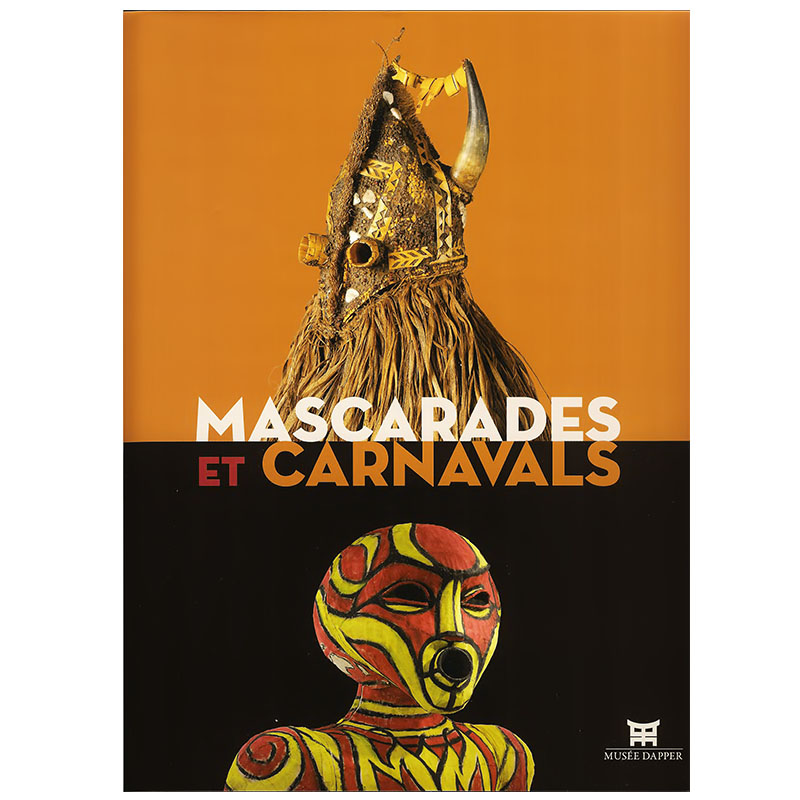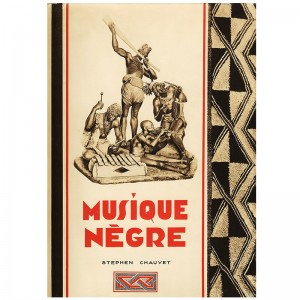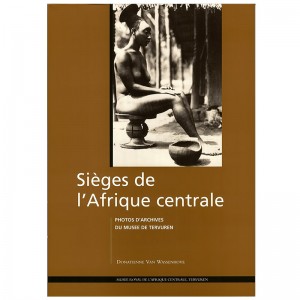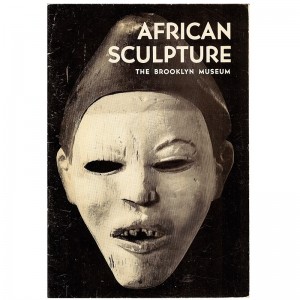MASCARADES ET CARNAVALS
Authors: Falgayrettes LEVEAU–C.
Material Type: Exhibition Catalogue. Dapper Museum, Paris: 5 octobre2011 – July 15, 2012
Publisher: Editions Dapper, Paris, 2011. Hardcover cardboard black draped editor with engraved title hollow under folded jacket illustrated in color, in-4, size: 23 x 30 cm, ISBN 978-2-915258-31-8
Content: 328 p, 47 ill.. b / w, 160 ill. col., biblio., biographies, 12 coul cards., notes, index
State of the work: Very good condition like new
Description
In Africa, regular festivities mark the end of initiation that prepares adolescents for adulthood. Similarly, the enthronement of a king or a leader, the celebration of the harvest, commemoration of the dead are all excuses for the ritual of celebration organization. The masks then appear and wander the eyes of all, inspiring excitement and fascination. Masquerades rise, moreover, the fervor of those attending the major annual festivals and large gatherings. Elsewhere in the Americas, including the Caribbean, are the carnivals that offer people the opportunity to share each year of the highlights. These events feed on traditional European carnivals, still very much alive, and draw some of their inspiration in ceremonies and festivals to own non-Western societies. Beyond their specificities, masquerades and carnivals live like rituals in which are built and structured communities.
This orientation based the theme of the book. Sub-Saharan Africa, the corpus consists mainly of masks, wooden faces, great diversity, and where human traits frequently mingle with references from the animal world. Forgetting the sequined costumes, the Caribbean is invested mainly through some mas, figures made for the carnival time with natural materials or recovery. This performance is also discussed world through photographs that reveal unique atmospheres where gestures, music and speech chanting parades and shows.
Contributions of authors – anthropologists, sociologists – underline the essential characteristics of arts carnival mask and arts with their issues, symbolic / religious, societal, political and artistic …. The book allows a wide readership to discover the riches that deserve to be better known.
Additional information
| Weight | 2010 g |
|---|---|
| Dimensions | 23 × 30 cm |
Related Products
-
AFRIKANISCHE KUNST
50,00 €Subtitle: aus Kölner Privatsammlungen Authors: W. Schmalenbach / KORINTHENBERG G. Material Type: Exhibition Catalogue. 35th Art Fair in West Germany, Cologne: 2004 Publisher: Koelnmesse GmbH, Cologne, 2004. Bound with black draped editor binding with title in white engraved recessed under jacket illustrated color new, in-4, size: 21.5 x 30.5 cm, ISBN 3-00-013510 -3 Content: 96…
-
MUSIQUE NEGRE
300,00 €Subtitle: Considerations - Technical - Musical Instruments - Series airs rated Authors: STEPHEN-CHAUVET Material Type: general or thematic Work Publisher: Editions Geographic Society, Maritime and Colonial, Paris, 1929. Paperback, 4to Content: 244 p, Library, numerous illustrations in b / w, a collection of 118 negro tunes with scores in text and scores inset + 30…
-
SIEGES DE L’AFRIQUE CENTRALE
30,00 €Subtitle: Archive Photos of Tervuren Museum Author: D. VAN WASSENHOVE Material Type: Exhibition Catalogue. Royal Museum for Central Africa in Tervuren: May to October 1996 Publisher: Royal Museum for Central Africa, Annals Humanities, Tervuren (Belgium), 1996. Paperback, 4to Content: 96 percent, 67 b / w photos, 6 pl.n / b, 1 cards, biblio.. Additional information:…
-
AFRICAN SCULPTURE
20,00 €Subtitle: The Brooklyn Mueum Authors: F. TENENBAUM / E. BRYANT Material Type: general or thematic Work Publisher: The Brooklyn Museum, New York, 1957/1958. Stapled, in-8, size: 15 x 22 cm Content: 24 p, 17 ill. b / w, 1 cards, table of figures Additional information: limited release, exhausted and rare work State of the book:…
42,00 €
1 in stock








